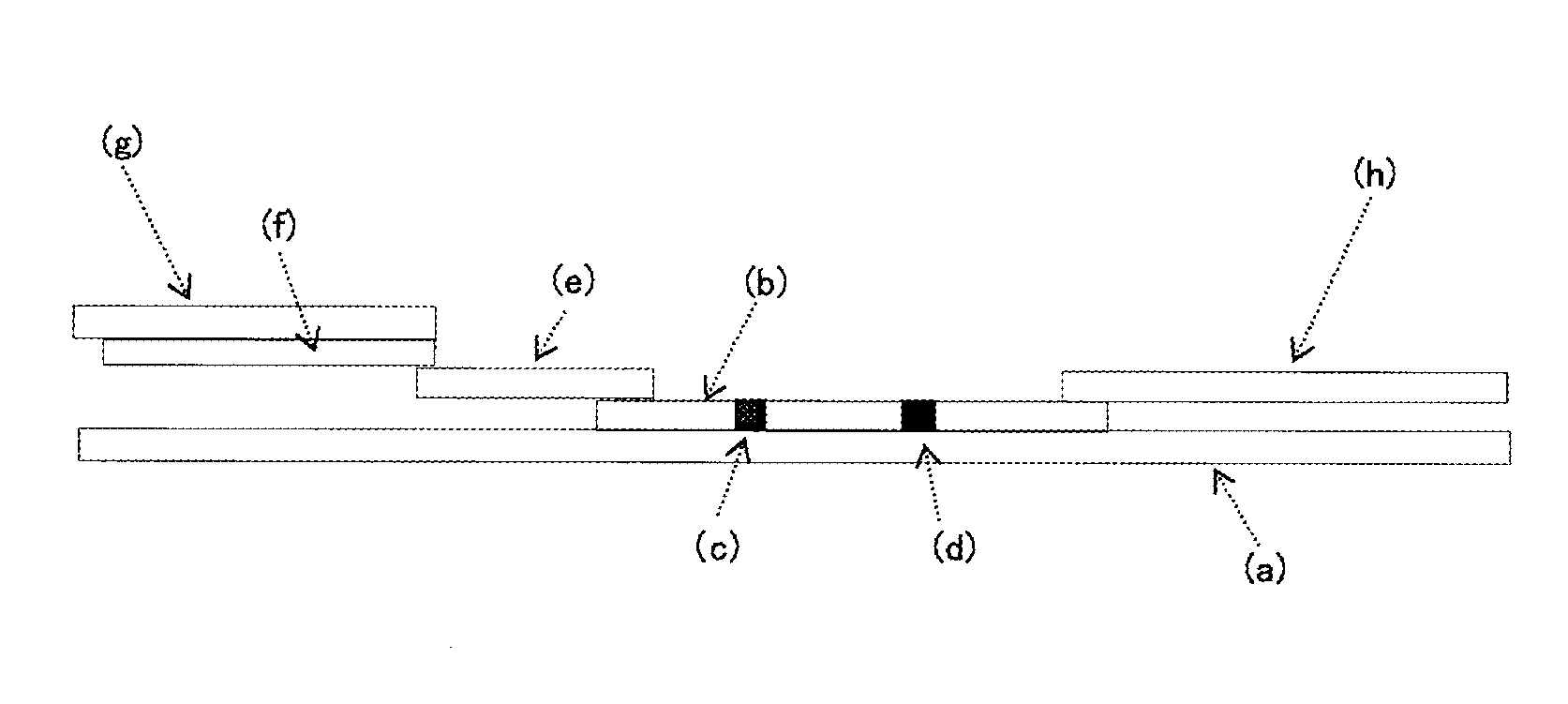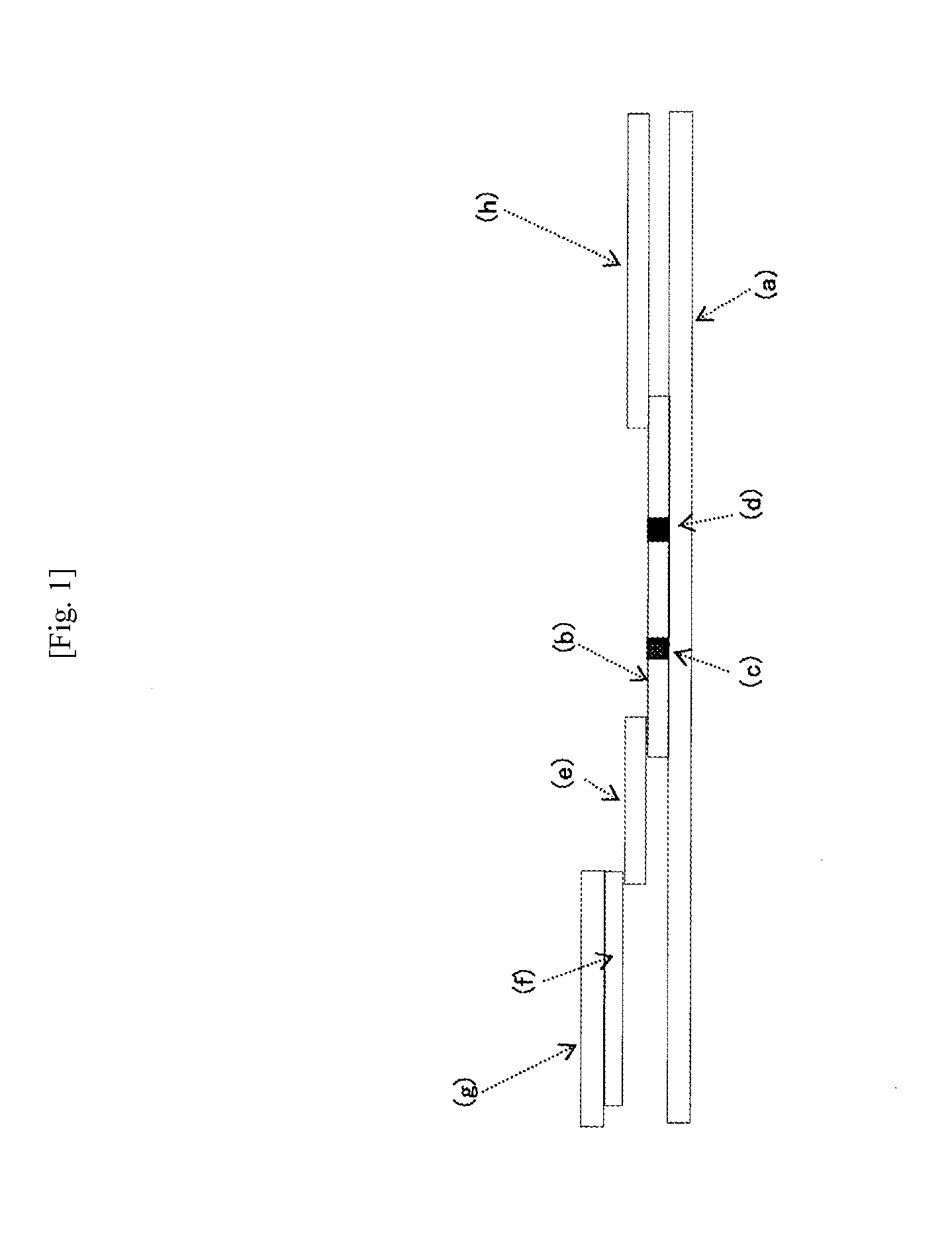Immunochromatographic test strip and detection method using immunochromatography for detecting target in red blood cell-containing sample
- Summary
- Abstract
- Description
- Claims
- Application Information
AI Technical Summary
Benefits of technology
Problems solved by technology
Method used
Image
Examples
example 1
Measurement Using Buffer Solution of the Present Invention (1)
[0133]1. Production of Immunochromatographic Device of the Present Invention
[0134]1) Preparation of Colloidal Gold-Labeled Anti-H-FABP Monoclonal Antibody (Anti-H-FABP Antibody Conjugate)
[0135](i) Preparation of Colloidal Gold Solution
[0136]To 500 mL of purified water heated to 73 degrees C., 1 mL of a 5% (w / v) triammonium citrate aqueous solution was added and then stirred and mixed. Subsequently, 1 mL of a 5% (w / v) tetrachloroauric(III) aqueous solution was added and reacted for 10 minutes with stirring and the reaction solution was then boiled. Subsequently, the reaction solution was cooled in ice water and a solution of colloidal gold with an average particle diameter of 40 nm was prepared. This solution of colloidal gold having an average particle diameter of 40 nm was adjusted to 1 OD / mL with a 20 mmol / L Tris buffer solution (pH 7.0).
[0137](ii) Preparation of Anti-H-FABP Antibody Conjugate
[0138]To 20 mL of the 1 OD / ...
example 2
Measurement Using Buffer Solution of the Present Invention (2)
[0154]A test was conducted for the buffer solution component of Example 1 bp using materials different from Example 1.
[0155]1. Production of Immunochromatographic Device of the Present Invention (2)
[0156]1) Preparation of Colloidal Gold-Labeled Anti-D-Dimer Monoclonal Antibody (Anti-D-Dimer Antibody Conjugate)
[0157](i) Preparation of Colloidal Gold Solution (2)
[0158]To 500 mL of purified water heated to 65 degrees C., 0.7 mL of an aqueous solution acquired by dissolving triammonium citrate and trisodium citrate dehydrate both at a ratio of 7% (w / v) was added and then stirred and mixed. Subsequently, 1 mL of a 7% (w / v) tetrachloroauric(III) aqueous solution was added and reacted for 10 minutes with stirring and the reaction solution was then boiled. Subsequently, the reaction solution was cooled in ice water to prepare a solution of colloidal gold with an average particle diameter of 30 nm. The solution of colloidal gold h...
PUM
 Login to View More
Login to View More Abstract
Description
Claims
Application Information
 Login to View More
Login to View More - R&D
- Intellectual Property
- Life Sciences
- Materials
- Tech Scout
- Unparalleled Data Quality
- Higher Quality Content
- 60% Fewer Hallucinations
Browse by: Latest US Patents, China's latest patents, Technical Efficacy Thesaurus, Application Domain, Technology Topic, Popular Technical Reports.
© 2025 PatSnap. All rights reserved.Legal|Privacy policy|Modern Slavery Act Transparency Statement|Sitemap|About US| Contact US: help@patsnap.com


